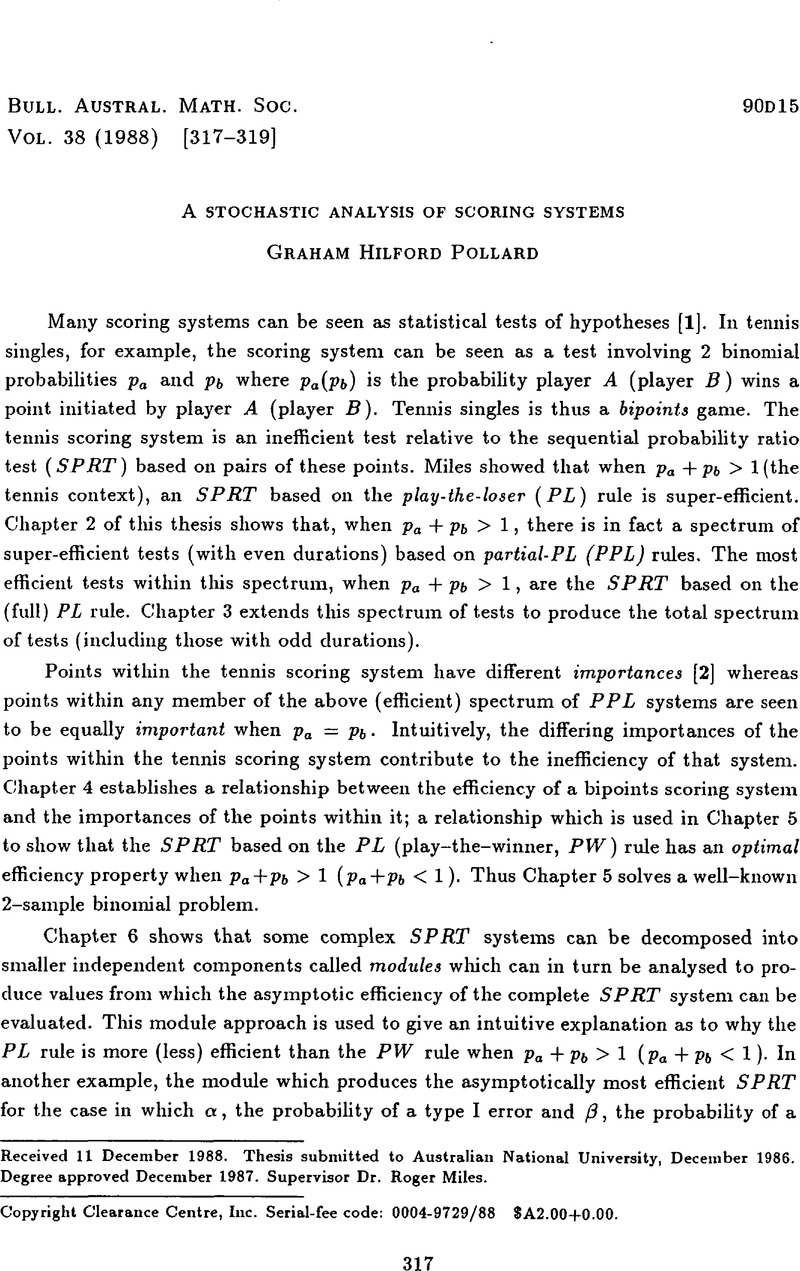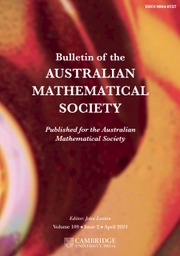No CrossRef data available.
Article contents
A stochastic analysis of scoring systems
Published online by Cambridge University Press: 17 April 2009
Abstract
An abstract is not available for this content so a preview has been provided. As you have access to this content, a full PDF is available via the ‘Save PDF’ action button.

- Type
- Abstracts of Australasian PhD Theses
- Information
- Bulletin of the Australian Mathematical Society , Volume 38 , Issue 2 , October 1988 , pp. 317 - 319
- Copyright
- Copyright © Australian Mathematical Society 1988
References
[1]Miles, R.E., ‘Symmetric sequential analysis: the efficiiencies of sports scoring systems (with particular reference to those of tennis)’, J.R. Statist. Soc. B 46(1) (1984), 93–108.Google Scholar
[2]Morris, C., ‘The most important points in tennis’, in Optimal Strategies in Sport: Vol. 5 in Studies in management science and systems, Edited by Ladany, S.P. and Machol, R.E., p. 131–140 (North Holland, Amsterdam, 1977).Google Scholar
[3]Pollard, G.H., ‘An analysis of classical and tie-breaker tennis’, Austral. J. Statist. 25(3) (1983), 496–505.CrossRefGoogle Scholar
[4]Pollard, G.H., ‘Scoring in multiple choice examinations’, Math. Scientist 10 (1985), 93–97.Google Scholar
[5]Pollard, G.H., ‘A new tennis scoring system’, Research Quarterly for Exercise and Sport 58 (1987), 229–233.CrossRefGoogle Scholar
[6]Pollard, G.H., ‘Scoring to remove guessing in multiple choice examinations’, Internat. J. Math. Ed. Sci. Tech. (to appear).Google Scholar


